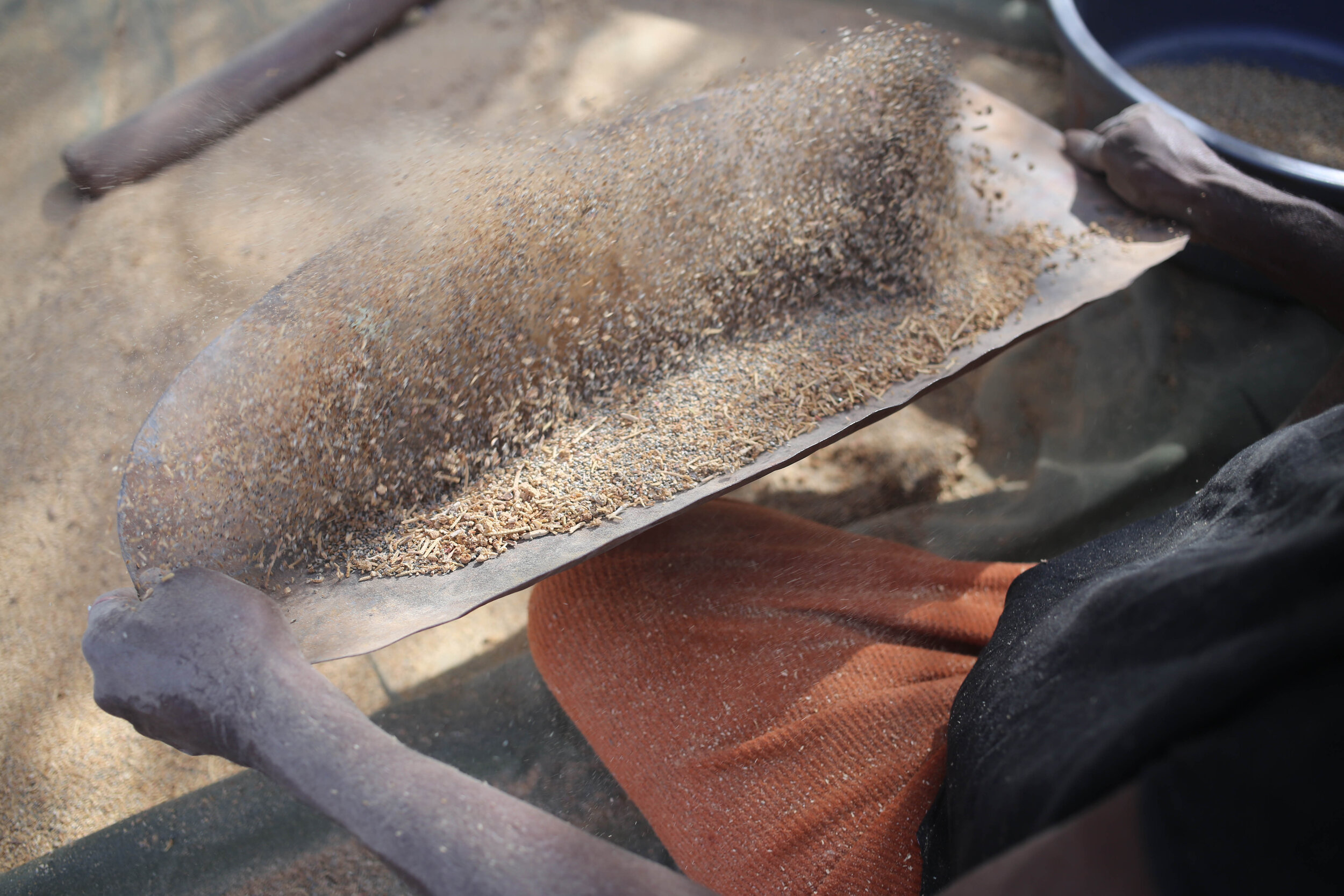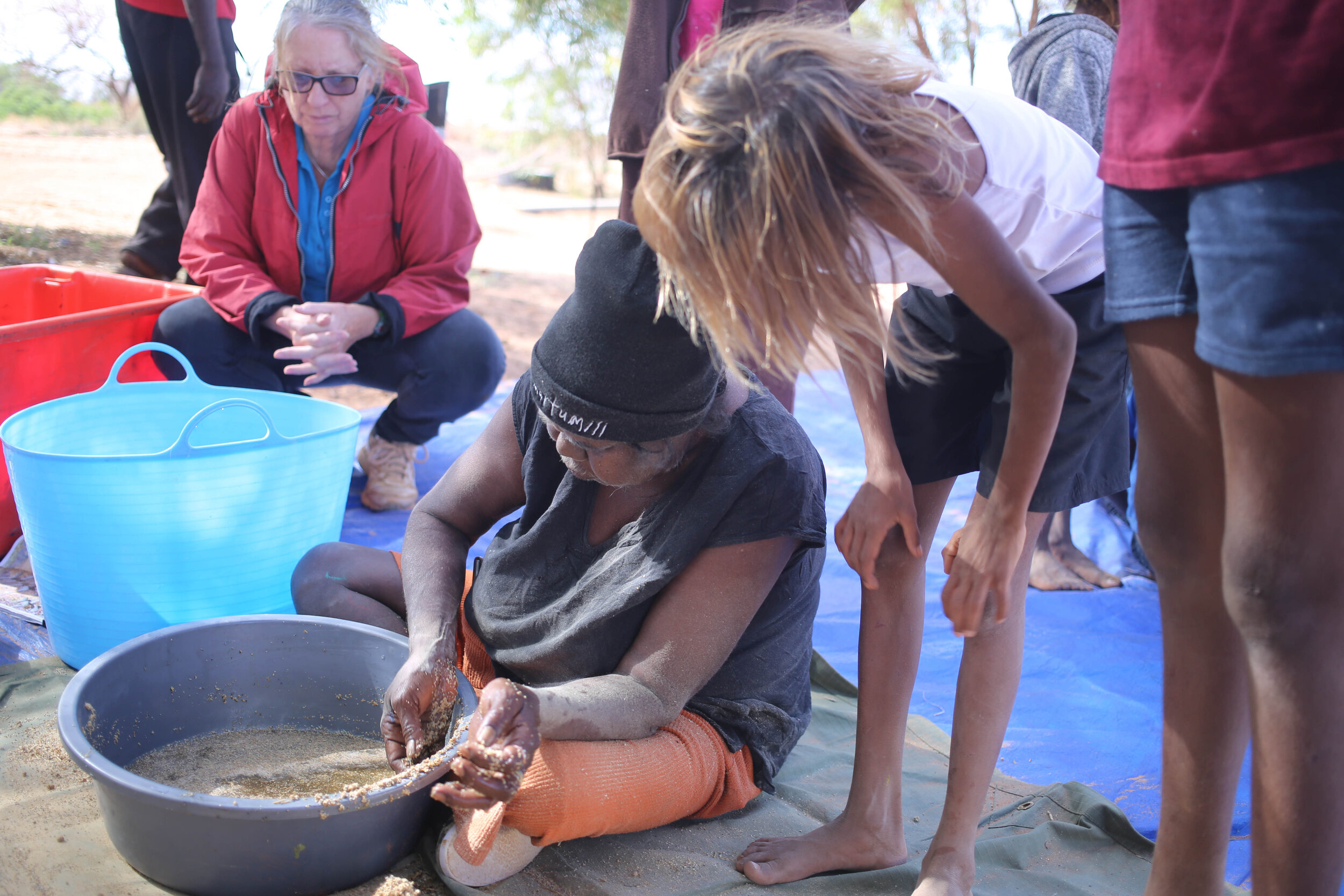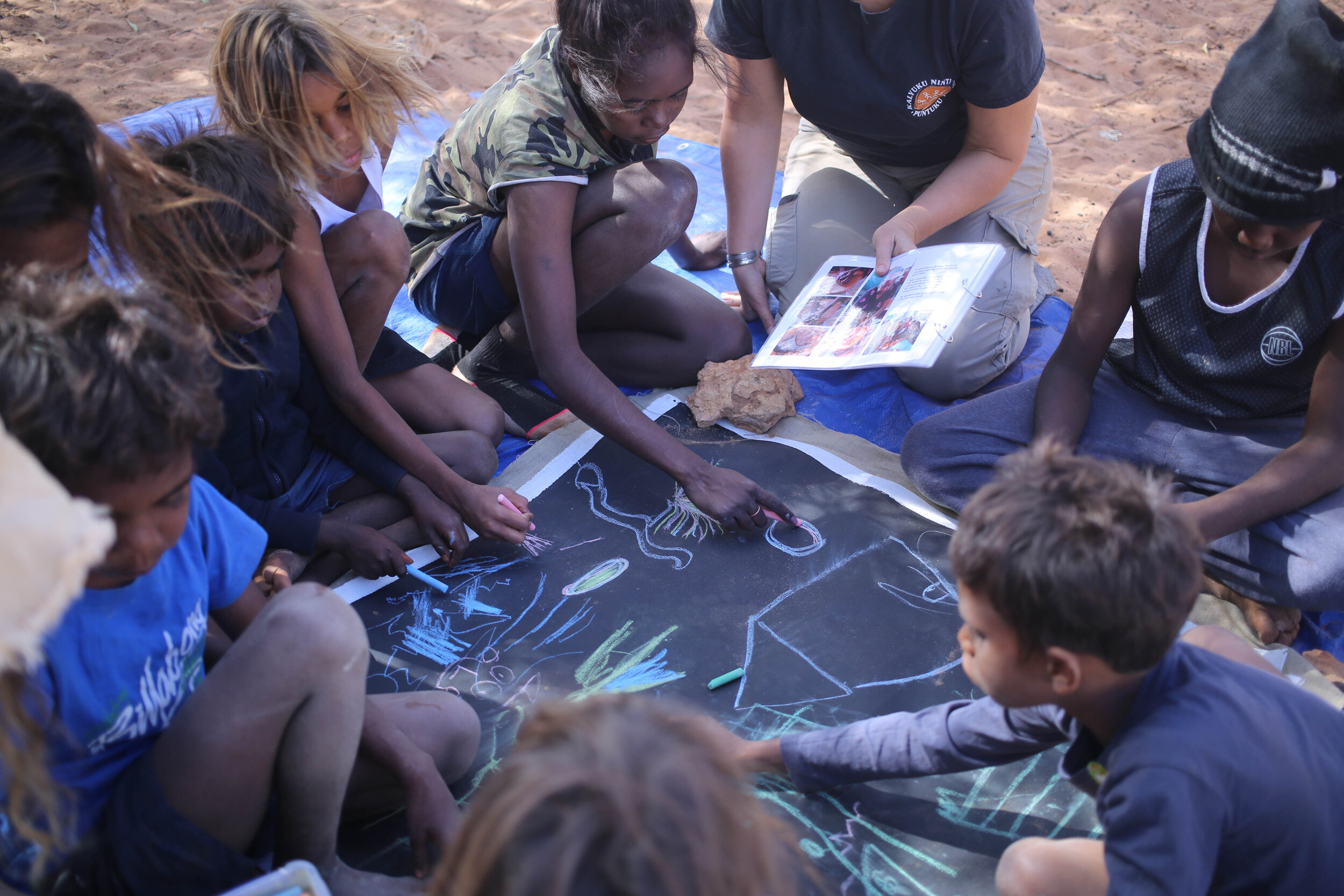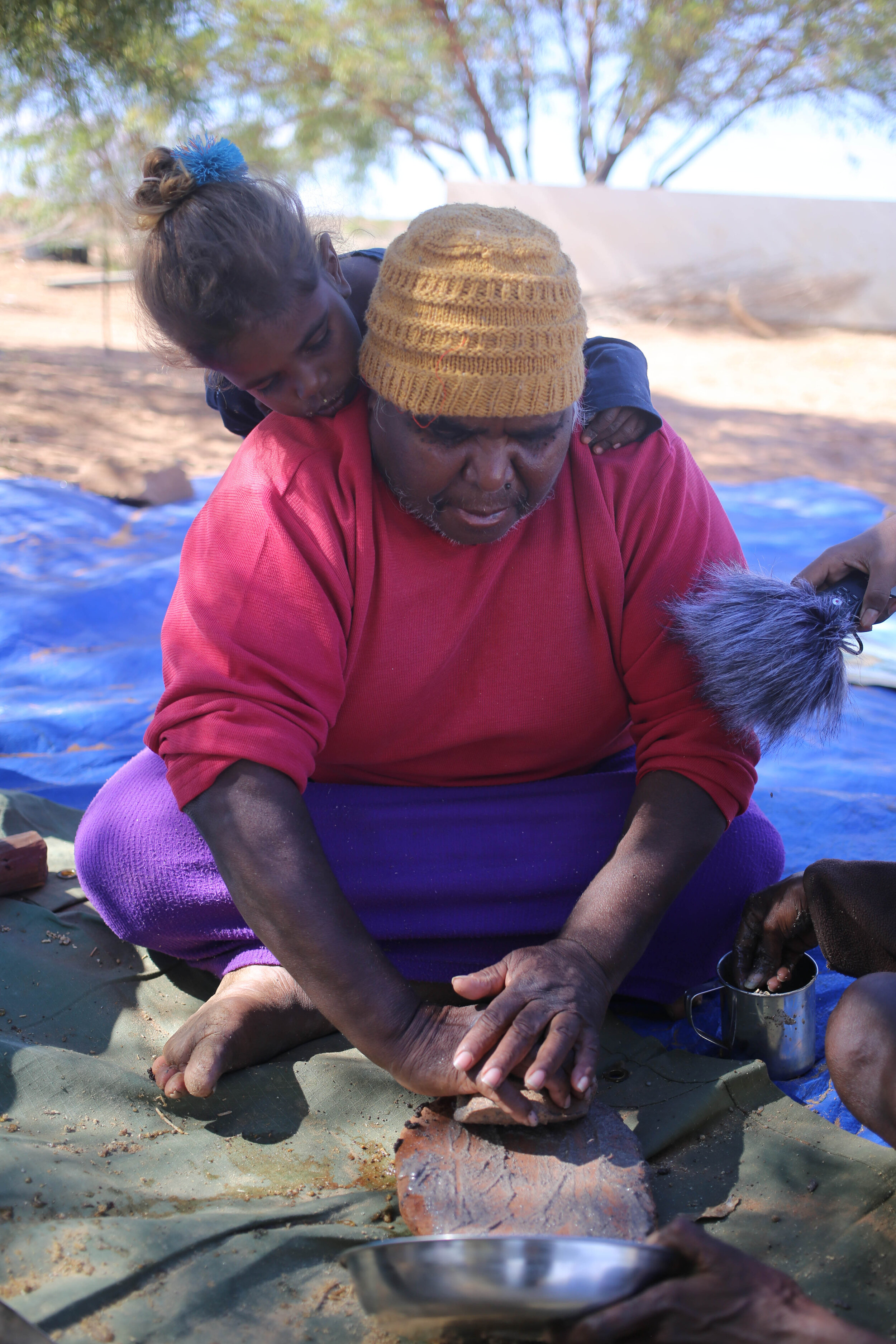Turning Kalaru Seed into Damper
The Punmu rangers, Families Program team, Rawa School, Punmu Clinic and Martumili all came together for a day of processing kalaru seed in June this year.
Kalaru begins growing after heavy rains in wantajarra (cool time) and when the big rains fill the linyji (claypans) the seed sits in the clay. As the surface water dries up, the plants begin to grow. But it needs kalyu (water) to keep growing.
The seed had been collected from a previous seed camp and was being stored at the Punmu Ranger Station, and school students watched and listened as Kuru (Gladys Bidu) read through the KJ’s “Kalaru book” while Debra Thomas began bashing the dried plant material, allowing some students to give it a try also.
As the process continued, many different community members took turns recording the older women and taking photos while others worked with Alice, the Martumili Field Officer, to draw the kalaru plant on a canvas together.
The full process for turning harvested kalaru into damper involves a lot of work — bashing, winnowing, yandying, soaking and grinding — before finally being baked/cooked in hot coals. Each part of this process, and each tool used, was read out by Kuru as it happened.
The older ladies in Punmu completed this process together and took turns grinding the kalaru seed into paste — a tough job!
After about an hour of processing, a damper was placed on the sand and coals of a small fire and everyone waited for a taste. The damper cake was cooked for about 15 minutes. Debra gave everyone a taste of it: gritty, soft and a bit sweet with a nutty taste and full of flavour!
Watching the process was a reminder of the amount of work that went into food production for pujiman (pre-contact Martu) and the sheer knowledge that Martu needed to hold in order to survive. It was also a reminder of the powers of intergenerational learning, from elder Jakayu Biljabu to the jijikaja (children), and all in between.




